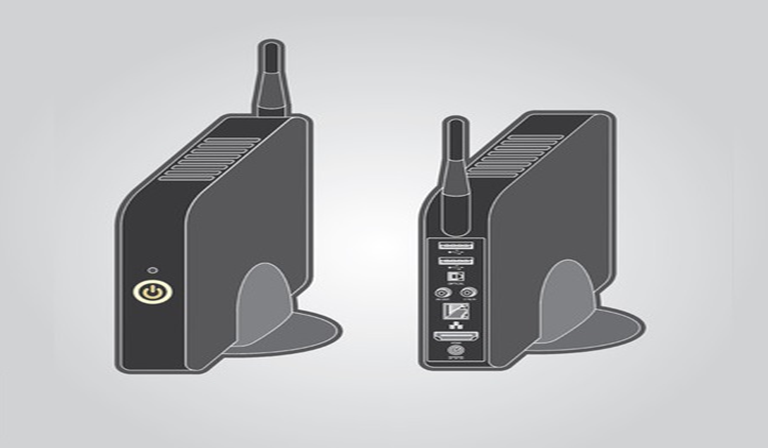
In the pursuit of more powerful technology, we also find ourselves with smaller tech. This is why cell phones went from brick-ish monstrosities to super-thin handheld computers, and why computers went from large enough to fill an entire room to small enough to fit on top of your desk — the mini PC. Just as there is an obsession on the end of manufacturers and enthusiasts to tap into the next great level of computing power, there’s an obsession on the end of consumers to use devices that are progressively becoming sleeker, slimmer and smaller.
Surprisingly enough, this isn’t limited to smart devices and laptops. It’s coming to your typical PCs, in surprising ways that you might not have initially thought possible. Let’s explore this super small device.
What Makes a Mini PC?
Mini computers can be defined as a “desktop” PC in an abnormally small form factor, one that goes beyond the limitations of most small PCs of the past five years. Plenty of options exist for a Windows 10 mini PC, too, which increases the utility for these remarkably small, cheap and relatively powerful devices for their price ranges. These devices can range from the size of your typical Internet router to something small enough to fit in your hand or be mistaken for a USB thumb drive.
What are the Latest Advances?
Of course, this begs the question: what are the advances in this field that makes it worth investing in? Just because something is small and portable doesn’t mean it can be used in regular usage scenarios: a glance at the Raspberry Pi can tell you that much. These newer implementations of the mini PC are made possible by advancements in Intel’s Atom CPU technology, their mobile x86 processors focusing on minimal heat, size and power consumption. Thanks to this advancement, there are plenty of mini computers on the market that can offer perfectly serviceable desktop performance for general usage/web browsing/media playing scenarios, occupying the “I just need a computer that works” niche for consumers and tech experts alike.
What are the Usage Scenarios?
Finally, let’s talk usage scenarios. These usage scenarios will vary based on what model you’re using and what your needs are, but at DCG, we use the Kangaroo Mobile Desktop on a frequent basis. We load these devices with diagnostics software, at which point they can be sent to clients to perform network diagnostics, which we can then use to approach our client’s ISP. Thanks to the low price and easy transportation of these little things, we’re able to send out cheap machines on the regular that can tackle basic diagnostics and other tasks without worrying about sending new equipment or people over. For any IT service provider, this kind of mobility and power should be considered invaluable.
These sticks can go beyond just diagnostics, too. While they aren’t ideal to be a dedicated machine, for businesses that don’t need high-end technology and are working with cloud-based providers, these computers offer themselves as cheap, easily-replaceable “thin clients”. In cloud computing, a thin client describes a low-powered computer that’s basically just used to access a business’ cloud service, but as more businesses focus on saving money and moving to the cloud, thin clients are becoming more popular than ever in terms of adoption and usage. Even home users that just want to browse the web can utilize tiny computers like these.
Can I Learn Anything Else Here?
While this article raised and answered plenty of its own questions, you may have some more of your own. When tackling a newer topic like using a mini PC, this is understandable. Consumers may want to know more about options and pricing, enthusiasts could be looking for more of the latest news in this topic, and businesses might want to know more about usage scenarios and how this kind of tech relates to their IT department.
To learn more about this awesome device and other hot tech topics, head over to the TIB for technology in business blog. On there, they write regular, informative news posts, tutorials and reviews on technology for your education and enjoyment.
About Contributor:
Brent Whitfield is the CEO of DCG Technical Solutions Inc. DCG provides the specialist advice and IT support Los Angeles businesses need to remain competitive and productive, despite their often limited IT infrastructure expenditure. Brent has been featured in Fast Company, CNBC, Network Computing, Reuters, and Yahoo Business. https://www.dcgla.com was recognized among the Top 10 Fastest Growing MSPs in North America by MSP mentor. Connect via Twitter, Facebook & LinkedIn.
